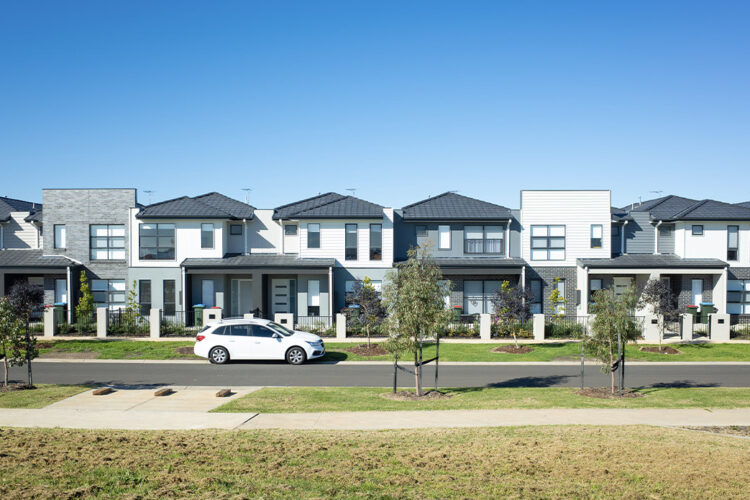New research has found that hundreds of thousands of lower-income Australians aged 50 and over will be without suitable housing in less than a decade.
The Australian Housing and Urban Research Institute (AHURI) released the findings in a new report, which examines how Australia could deliver the types of housing required by individuals who are in or approaching retirement, and who do not have affordable, secure housing.
The final report, titled ‘Inquiry into housing policies and practices for precariously housed older Australians’, was undertaken for AHURI by researchers from University of South Australia, RMIT University, Curtin University and Flinders University.
It said that while the belief that home ownership is the desired option for everyone remains popular in the country (mirrored by the focus on home ownership through existing policy settings), it is clear that this is no longer the reality across all ages.
Indeed, home ownership rates were around 75 per cent for people aged 55 years and over in 2019. However, recent analysis suggested that rates will fall to an estimated 56 to 57 per cent by 2056.
Particularly alarming is that home ownership rates among lower income retirees will decline from a current high of around 70 per cent to below 50 per cent in the coming years.
Australia currently faces a mammoth challenge – driven by continued deteriorating housing affordability – with the AHURI inquiry estimating that by 2031, 440,000 older households will be unable to find or afford suitable housing.
The growing weight of mortgage stress
According to AHURI, a number of contributing factors have culminated in the decline in home ownership for older households, including growing mortgage stress.
While retirement was likely to coincide with outright home ownership in the past, home owners are increasingly retiring with mortgage debt. Moreover, the amount of mortgage debt has increased by a staggering 600 per cent over the last 30 years.
The report attributed this to the ability of households to borrow considerably more than they could in the past due to banking deregulation and the use of mortgage finance for other types of consumption, the delaying of home purchase until later in life, and/or the re-establishment of a loan to regain home ownership.
As a result, the age at which outright home ownership is being achieved rose from 58 in 1988 to 67 in 2015-16.
More alarmingly, superannuation is being used to pay mortgage debt, which could impact a household’s ability to maintain standards of living as they age.
Mortgage debt could lead to increases in repayment default, and consequently, more middle and older age households could fall out of home ownership, the report suggested.
Constraints for older Aussies
The report identified various constraints that inhibit the supply of innovative or alternative forms of housing for lower income older households, including lending practices, costs of development, planning regulations, and land supply.
Seven composite alternative housing models were developed and tested through a survey of lower income households. There was a preference for a shared equity home ownership model, a co-operative housing model, and a transportable model.
The households surveyed particularly favoured the first option, according to lead researcher, Dr Debbie Faulkner from the University of South Australia.
“The strong preference for the shared equity model reflects the expectation that it is ‘normal’ to own one’s home in Australia,” Dr Faulkner said.
“The subdued response to the other options we presented indicates people’s long entrenched aspirations and a lack of familiarity older people have with ‘alternative’ housing options.”
The inquiry also highlighted that land lease developments could potentially deliver home ownership to older people.
Under this arrangement, the household owns their dwelling but not the land, which is leased from another person or corporation. As householders do not own the land component of their housing, they could be eligible for some Commonwealth Rent Assistance (CRA), which could improve housing affordability.
“Not all buyers have sufficient cash to purchase a Land Lease home, but some could support a small mortgage as a way of obtaining security of tenure and preserving their capital,’ Dr Faulkner said.
However, banks rarely lend for this type of product, which hinders older Australians from achieving home ownership, she argued.
“This refusal to provide mortgages was criticised as being inconsistent, as banks do lend for other depreciating assets such as cars,” she pointed out.
Making assumptions about older Aussies
Noting that responsible lending obligations have created a “conservative” lending environment, the AHURI report called for a re-examination of the circumstances in which age should be grounds for refusing a mortgage loan and assumptions about capacity to service loans.
Policymakers assume that older borrowers cannot afford loan repayments but those who are not home owners nor living in social housing pay a substantial portion of their income on rent, the report pointed out.
“Financial regulators could study the patterns of income and consumption of older people, as well as loan defaults and rent arrears, to understand the risk of lending to this age cohort and the ramifications of not servicing this cohort,” the report said.
The hesitation to lend stems more from the perception of regulatory risk rather than financial risk, the report said.
“Any loan, by definition, would need to be small or manageable, as a pensioner has limited income with which to service borrowings,” it said.
“A small loan, however, only requires a relatively short loan term, mitigating concern about the borrower’s longevity. In cases where both the loan (e.g., $30,000) and equity gap is small (i.e., when the loan to value ratio is very low), the equity in the home would always be more than sufficient to recoup debt in the event of a mortgagee in possession sale.”
If you’re looking to refinance for a better rate or are looking for the right rate for your clients at zero cost, contact Finni Mortgages’ experts and let us do the hard work for you.
Visit our website here or call 1300 002 023 to learn more on how we can help you!


